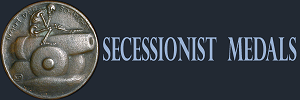Arnold (Aharon) Zadikow
1919. xMUENCHENER — x — REVOLUTIONS • FASCHING (Munich Revolution's Fasching). Single-sided, hollow-cast bronze, medium-brown patina, 74.9 mm, 78.30 g. Vorzüglich (extremely fine). Very rare!
Death as animate, desiccated cadaver costumed as Renaissance gallant steps center field removing mask with right hand; middle distance crowd of costumed revellers dance on double ground-line; title legend surrounding upper rim divided by image (the x's in the title actually appear to be small left-facing Hakenkreuze); year date 19 —— 19 separated by image in exergue below ground-line; artist's monogram interlaced AZ lower center between Death's legs; raised rim.
For an example in the American Numismatic Society collection see:
http://numismatics.org/aod/id/7513.2614.5.a. To date, this is the only published documentation of this medal I have located.
Fasching is the annual pre-Lenten carnival celebration in Munich, characterized in part by numerous costume balls. In 1919, however, the usual revelries were likely curtailed. As the Great War neared its close, on 7 November 1918, a revolution occurred in Munich, the royal family fled, and a socialist People's State of Bavaria (Volksstaat Bayern) under the leadership of Kurt Eisner was declared on the following day. Eisner was assassinated on 21 February 1919, and martial law with a 7:00 pm curfew was announced on 22 February. Fasching began 27 February and ended 10 March, so martial law was almost certainly in effect throughout the period. Eisner's assassination initiated a dangerous period of political and social instability, engendering incidents of bloodshed, until the declaration on 9 April of the Bavarian Soviet Republic (First Soviet Republic), which in turn led to a Second Socialist Republic, which was finally brutally suppressed in early May, in part by volunteer Freikorps personnel.
It is thus easy to understand this medal's imagery, even if the revelries portrayed bear little resemblance to reality that year. Zadikow's presence in Munich at the time is also uncertain. Conscripted in 1915, he was severely wounded and taken prisoner in 1917 and not repatriated from Britain until 1919. Though he did return to his family in Munich, his arrival date is unrecorded so far as I know.
Nine single-sided "Totentanz" medals were designed by Zadikow: two dated 1914, cast in iron and/or bronze; four dated 1915, also in iron or bronze; one undated (likely 1919), in iron or white metal; one dated November 1918 (likely produced 1919); and the present medal dated 1919, both in bronze.
The medallist's repatriation from prisoner-of-war confinement in Britain in 1919 opposes a 1918 production date sometimes suggested in publications for two of the latter pieces (Cf: Fearon, D. 2009. "'Out of the Barbed Wire': a newly discovered medal design by Arnold Zadikow," The Medal, no. 54 (2009), pp. 45 - 47, for additional biographic information).

 Recent Posts
Recent Posts